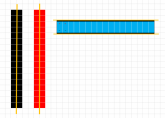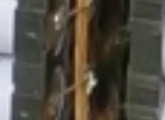Hedges
I See Electromagnetic Fields!
- Joined
- Mar 28, 2020
- Messages
- 21,048
Correct, they will be 34 in parallel (2 rows of 17 cells). What gauge wire should i use to connect the 14 in series?
150A draw/34 parallel = 4.4A. Almost any wire will do.
The question is what is the best mechanical or other connection method. Is there a way to manually connect busbars to the terminals? Or do you need a spot welder, which some posters have used?

Battery Spot Welder, redo
I salvaged some 18650 cells and wanted to weld up the packs, so I purchased one of these welders. The first one I purchased from Amazon and on 120v it would only weld the thinnest strips with the settings maxed out. Base on some of the videos of it in use, I am guessing the power transformer...

18650 Pinholes
Hi Started building battery packs with harvested 18650's. I think I know where I am going wrong but would like some like minded person(s) to comment. The basic problem is that when I spot weld the packs I have ended up with a number of pinholes in the negative end of some cells. This is the...
Note the use of sheet metal rather than a gauge of wire. Maybe a sheet joined to positive of 2x17 cells and negative of next 2x17 cells.
At the end of the stack you need a suitable way to adapt over to 2/0 cable without necking down to a cross section with less ampacity than about 125A. Could be a sheet of metal wide enough for 17 cells and long enough to wrap around stripped 2/0 cable. Then mechanically clamp in a bunch of places, or solder (BEFORE welding to batteries!) Have positive cable exit the pack going one direction, and negative cable going in the opposite direction, to balance draw from each string of cells.
What BMS? Get that wrong and you burn your house down, or at the very least kill cells.










